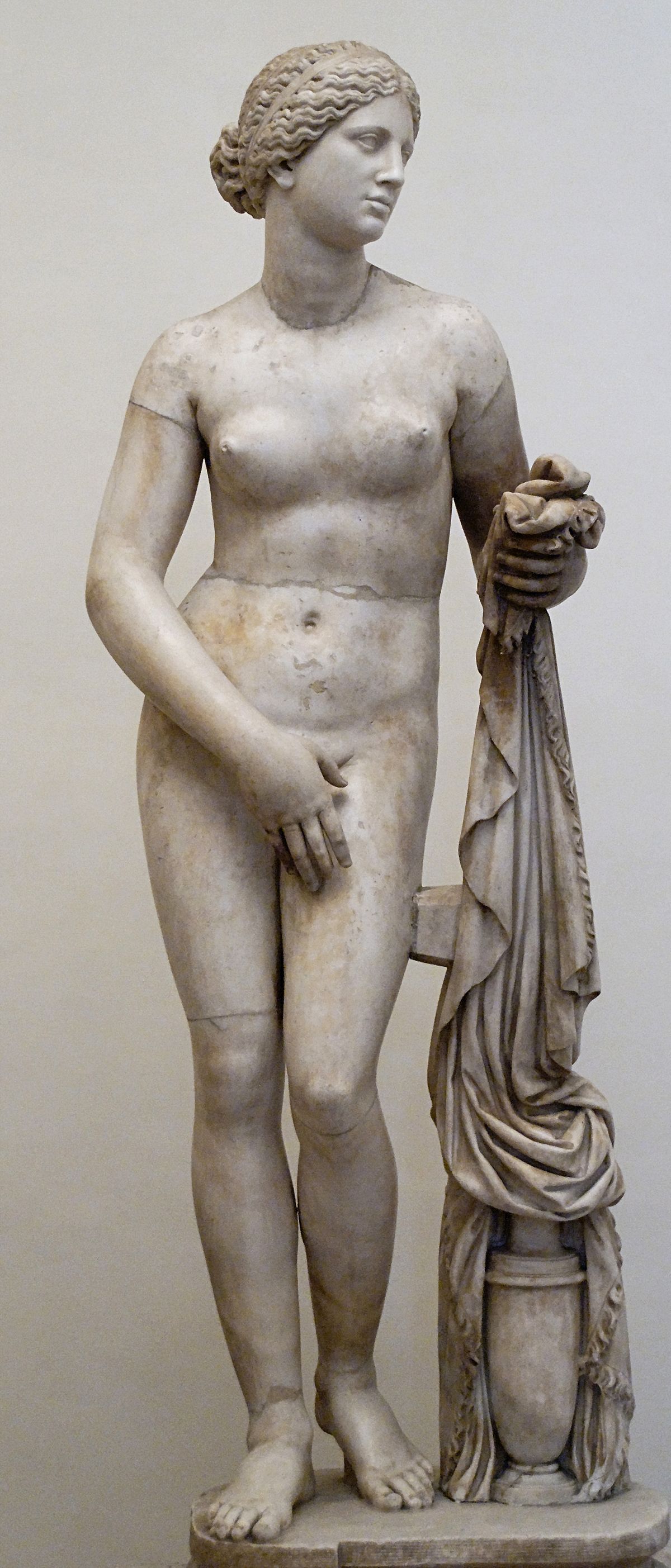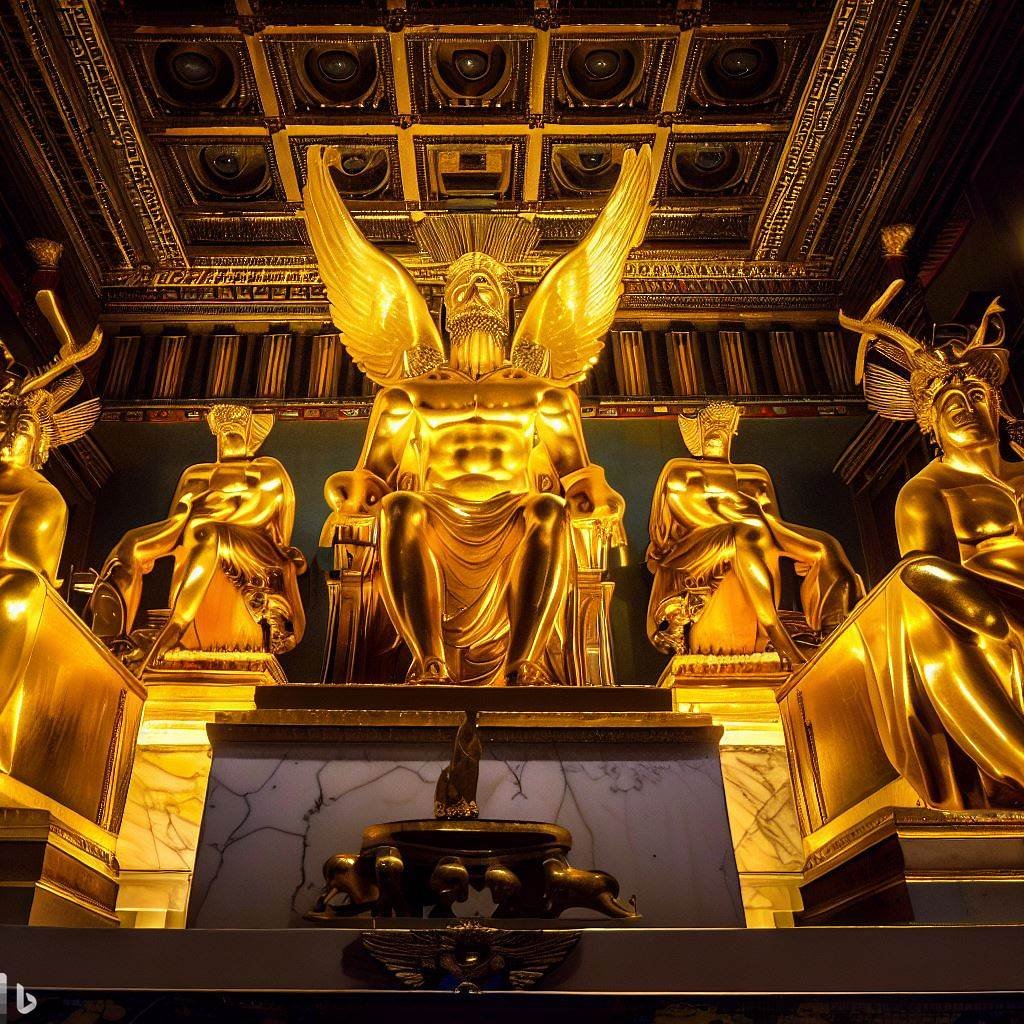In Greek mythology, gold is more than just a precious metal; it is a symbol of power, wealth, and divine status.
The legendary Golden Fleece and King Midas’s cursed touch are just a few tales of gold. These stories are captivating and timeless.
We will explore the importance of gold in Greek mythology. We’ll look at the stories, symbols, and cultural views of this metal. Join us as we uncover the secrets of golden tales and their meanings.
Keep reading to learn about the mythical stories of gold. See how it has influenced Greek mythology and more.
Key Takeaways about Gold in Greek Mythology
- The significance of gold in Greek mythology extends beyond being a precious metal; it embodies power, wealth, and divine status.
- Legendary tales such as the quest for the Golden Fleece and King Midas’s golden touch exemplify the allure and dangers associated with gold.
- Characters like Aphrodite and Eros are intertwined with gold, emphasizing its association with beauty, desire, and love.
- Greek mythology features the golden apple as a catalyst for conflict, leading to the Trojan War and highlighting the consequences of unchecked ambition.
- Gold symbolizes the divine in Greek mythology, seen in the golden thrones of the Olympian gods and artifacts like Apollo’s golden crown, reflecting themes of power, immortality, and enlightenment.
Golden Tales: Exploring the Role of Gold in Greek Mythology
The Golden Fleece: A Quest for Power and Fortune
The legendary Golden Fleece is one of the most prominent symbols of gold in Greek mythology. It represented power, wealth, and prosperity. The tale of Jason and the Argonauts is the most famous story connected with the Golden Fleece.
According to the myth, King Pelias told Jason that he could claim the throne of Iolcus only if he brought back the Golden Fleece. To achieve this goal, Jason assembled a team of heroes, the Argonauts.
After many adventures, the Argonauts reached Colchis, where the Golden Fleece was kept in a sacred grove, guarded by a dragon. With the help of the sorceress Medea, Jason managed to steal the fleece and return to Iolcus, defeating Pelias and fulfilling his quest. The Golden Fleece became a symbol of heroic achievement and a source of inspiration for generations of Greeks.
“The Golden Fleece is a symbol of what we can achieve through courage and perseverance.”
The myth of the Golden Fleece reflects the Greek fascination with gold as a means of achieving wealth and power. The story also highlights the significance of quests and adventures in Greek mythology, showcasing the value of bravery and determination.
King Midas: The Curse of the Golden Touch
In Greek mythology, King Midas was a wealthy and powerful ruler who possessed a great passion for gold. One day, he was granted a wish by the god Dionysus, and he chose to have everything he touched turn to gold. However, Midas soon realized that his wish was a curse when he turned his daughter and even his food and drink to gold.
Buy Gold Online: The Smart and Secure Way
Discover the safest and most reliable strategies to buy gold online. Make informed investment decisions and secure your financial future today!
Learn MoreThe myth of King Midas serves as a cautionary tale against the dangers of greed and desire for wealth. Midas ultimately begged Dionysus to take away his power, and the god instructed him to wash in the river Pactolus to rid himself of the golden touch.
The Moral Lesson Behind the Story
The story of King Midas teaches us that material wealth and possessions should not be the ultimate goal in life. Instead, we should prioritize the well-being and happiness of ourselves and those around us.
The curse of the golden touch highlights the dangers of greed and the importance of moderation. It also reminds us of the value of human connections and emotional bonds that cannot be bought with gold.
The myth of King Midas continues to be a popular and relevant story today, serving as a reminder of the timeless lessons that Greek mythology can offer us.
The Divine Beauty of Aphrodite and Eros
In Greek mythology, the goddess Aphrodite was often associated with beauty and desire. The god Eros, her son, was known as the god of love and attraction. Both figures played significant roles in shaping the myths and legends of ancient Greece.

Aphrodite was often depicted as a stunningly beautiful woman who possessed the power to captivate the hearts and minds of men and women alike. Her association with beauty and love made her one of the most popular figures in Greek mythology.

Eros, on the other hand, was often depicted as a cherubic young boy with a bow and arrow. He was said to use his arrows to make people fall deeply in love with one another, often resulting in great passion and desire.
The Connection to Gold
Gold played a significant role in the myths and legends associated with Aphrodite and Eros. According to some legends, Aphrodite was born from the foam of the sea, and as she rose from the water, drops of gold fell from her body. This association with gold further emphasized her beauty and desirability, as gold was a symbol of wealth and power in ancient Greece.
Eros was also associated with gold. In some versions of his story, he was said to carry a golden bow and arrow, which he used to strike people with his love-inducing magic. The golden bow and arrow was a symbol of his divine power and heightened his image as a god of love and attraction.
The connection to gold made Aphrodite and Eros even more divine and powerful figures in Greek mythology.
The Golden Apple: A Catalyst for Conflict
In Greek mythology, the golden apple was a source of great conflict and rivalry among the goddesses Hera, Athena, and Aphrodite. According to the myth, Eris, the goddess of discord, threw a golden apple at the wedding of Peleus and Thetis, with the inscription “to the fairest.”
All three goddesses claimed the apple, which sparked a fierce competition as to who should receive it. Zeus, unwilling to choose between the goddesses, appointed Paris of Troy to decide.
Each goddess tried to persuade Paris by offering him a bribe. Hera promised to make him the king of Europe and Asia, Athena offered him wisdom and victory in battle, and Aphrodite tempted him with the most beautiful mortal woman in the world, Helen of Sparta. Paris ultimately chose Aphrodite, which enraged the other two goddesses.
The consequences of Paris’s choice were disastrous. Helen was already married to Menelaus, the king of Sparta, so Paris’s decision led to the Trojan War, a ten-year conflict between the Trojans and the Greeks. The war saw many battles and the loss of countless lives on both sides, ultimately resulting in the fall of Troy.
The Significance of the Golden Apple
The golden apple is significant in Greek mythology because it symbolizes the power of desire and the lengths to which people will go to obtain what they want. The myth shows how easily people can become consumed by greed and envy, leading to disastrous consequences for all involved. It also highlights the rivalry and jealousy among the gods and goddesses, showing that even the most powerful beings have flaws and weaknesses.
The myth of the golden apple has inspired numerous works of art and literature throughout history, including William Shakespeare’s play Troilus and Cressida and the painting The Judgment of Paris by Peter Paul Rubens. It remains a timeless reminder of the dangers of unchecked ambition and the importance of making wise choices.
The Golden Age: A Time of Prosperity
In Greek mythology, the Golden Age was a period of abundance, peace, and harmony. It was believed that during this era, humans and gods lived together in perfect harmony, and everything was plentiful. The Golden Age was seen as a time of great prosperity, where people had everything they needed and did not have to work hard to survive.

The Golden Age was believed to have been ruled by Cronus, the god of time, and his consort, Rhea. During this time, there was no need for laws or government, as everyone lived in peace and harmony with each other. It was believed that the Golden Age was the first era of humanity, and it lasted until the Titanomachy, the war between the Olympians and the Titans.
The Golden Age was often depicted in Greek art, with images of happy people living in a world of plenty. The concept of the Golden Age was also a popular theme in literature, with many Greek poets and writers referring to it in their works.
The Four Ages of Man
The Golden Age was the first of the four ages of man in Greek mythology. It was followed by the Silver Age, the Bronze Age, and the Iron Age. Each of these ages was seen as a decline from the previous one, with the Iron Age being the worst of all.
The Silver Age was a time when people became more self-centered and less respectful of the gods. The Bronze Age was characterized by violence and warfare, as people became more aggressive and warlike. The Iron Age was seen as a time of poverty and hardship, where people had to work hard to survive and where there was little hope for the future.
Despite the decline of humanity in each age, the idea of the Golden Age continued to hold a special place in Greek mythology. It was believed that the Golden Age would one day return, bringing with it a new era of peace, prosperity, and harmony.
Olympian Gods and Their Golden Thrones
In Greek mythology, the Olympian gods were the most powerful deities who ruled over the earth and the heavens. They were often depicted sitting on thrones made of gold, a symbol of their divine status and authority.

Each of the gods had their own unique throne, adorned with intricate designs and embellishments that reflected their characteristics and domains. For example, the throne of Zeus, the king of the gods, was often decorated with thunderbolts, eagles, and other symbols of power.
The use of gold in the construction of the thrones was not just for aesthetic purposes, but also to emphasize the divine nature of the gods. Gold was considered a sacred metal in ancient Greece and was associated with the gods and immortality.
The Golden Thrones of the Olympian Gods
| God | Throne Description |
|---|---|
| Zeus | Throne decorated with thunderbolts and eagles, often depicted with a backrest and armrests |
| Hera | Throne decorated with peacock feathers and symbols of motherhood and marriage |
| Poseidon | Throne decorated with sea creatures and symbols of power over the ocean |
| Demeter | Throne decorated with fruits, flowers, and symbols of agriculture and fertility |
| Athena | Throne decorated with owls, olive branches, and symbols of wisdom and war |
| Apollo | Throne decorated with lyres, laurel wreaths, and symbols of music, poetry, and prophecy |
| Artemis | Throne decorated with crescent moons, deer, and symbols of hunting and nature |
| Ares | Throne decorated with weapons, shields, and symbols of war and violence |
| Aphrodite | Throne decorated with roses, doves, and symbols of love and beauty |
| Hephaestus | Throne decorated with anvils, hammers, and symbols of craftsmanship and technology |
The Olympian gods were often depicted sitting on their thrones, watching over the world below and intervening in human affairs when necessary.
The use of gold in their thrones not only emphasized their divine status, but also served as a reminder of their power and influence over mortals.
The Golden Crown of Apollo
In Greek mythology, Apollo is known as the god of music, prophecy, and healing. He is often associated with the sun and depicted with a radiant aura or golden crown. The crown is a symbol of his divine power and authority, as well as his connection to the precious metal gold.

The story goes that Apollo was once challenged by a mortal musician named Marsyas to a musical contest. Despite Apollo’s objections, Marsyas pressed on and played his flute so skillfully that he was declared the winner by the judges. Apollo, enraged by the decision, punished Marsyas brutally and claimed the golden crown of victory for himself.
The golden crown of Apollo represents not only his triumph in the musical contest but also his status as a divine being. It is often depicted as a full halo of gold rays or a laurel wreath adorned with golden leaves. The crown is a symbol of excellence, prestige, and glory, and is often used to represent high achievement and honor.
The Symbolism of the Golden Crown
The golden crown of Apollo is a potent symbol in Greek mythology, representing a range of meanings and concepts. It is a symbol of power and divinity, reflecting Apollo’s status as a god and his ability to shape the world through his music and prophecies. It is also a symbol of enlightenment and wisdom, reflecting his role as a healer and guide to mortals.
Moreover, the golden crown of Apollo represents the connection between the physical and spiritual realms. The metal gold is associated with the sun, which was revered as a divine source of light and warmth. The crown thus symbolizes the link between the earthly and the celestial, the human and the divine.
The Legacy of Apollo’s Golden Crown
The legacy of Apollo’s golden crown extends beyond Greek mythology and into modern culture. The image of an ethereal, radiant crown is often used in art, fashion, and advertising to evoke feelings of aspiration, transformation, and transcendence. The crown’s association with gold also conveys a sense of luxury, elegance, and refinement, making it a popular motif in high-end branding.
Furthermore, the symbolism of the golden crown has been reinterpreted and adapted to suit various contexts and cultural traditions. In Christian iconography, the halo is a similar symbol of holiness and divine presence, and is often depicted as a golden or glowing ring encircling the head of a saint or angel. In Hindu and Buddhist art, the crown of enlightenment represents the attainment of spiritual awakening and the achievement of inner peace and harmony.
The golden crown of Apollo remains a powerful reminder of the enduring legacy of Greek mythology and its continued influence on modern culture and imagination.
The Role of Gold in Greek Architecture
Gold was highly valued in ancient Greece and was commonly used in the construction of their stunning architecture. Greek temples and sacred buildings were adorned with gold, which was used both for its aesthetic value and its symbolic meaning.
One of the most famous examples of gold in Greek architecture is the stunning statue of Athena that overlooked the Parthenon in Athens. The statue was made of ivory and gold, and was over 40 feet tall. The goddess was depicted wearing a crown and holding a shield and spear.
| Building | Description |
|---|---|
| Temple of Artemis | This temple was one of the Seven Wonders of the Ancient World and was adorned with gold and ivory statues. |
| Temple of Zeus at Olympia | This temple featured a massive statue of Zeus that was made of gold and ivory. |
| Temple of Apollo at Delphi | This temple was believed to be the home of the god Apollo and was decorated with gold and other precious metals. |
In addition to temples, gold was also used in the construction of coins and jewelry. Greek coins were often made of gold or silver and featured intricate designs of gods, goddesses, and mythological creatures. Jewelry was crafted from gold and other precious metals, and was often given as a sign of wealth and status.
Overall, gold played a significant role in Greek architecture and was used to create some of the most iconic and stunning structures of the ancient world. Its use in temples and other sacred buildings emphasized the importance of religion and spirituality in Greek culture.
Gold in Divine Artifacts and Artefacts

Gold was revered in ancient Greece not only for its aesthetic value but also for its symbolic significance. This was reflected in the use of the precious metal in various divine artifacts and religious symbols.
One such example is the golden chariot of Helios, the god of the sun, which was said to pull the sun across the sky. The chariot was said to be made of solid gold, representing the brilliance and radiance of the sun.
Another notable instance is the golden statue of Athena, the goddess of wisdom, who was believed to have been born from the head of Zeus. The statue, which stood within the Parthenon in Athens, was said to be made of gold and ivory, depicting the goddess in all her glory.
In addition, gold was used in the construction of temples and other sacred buildings, including the famous Temple of Artemis in Ephesus, which was adorned with gold-plated columns and decorations. Gold was also used to create various religious artifacts, such as golden cups and figurines, which were used in rituals and ceremonies.
The use of gold in divine artifacts and religious symbols emphasized the importance of the metal in Greek culture and religion, signifying its connection to the gods and their power.
Golden Creatures in Greek Myths
Golden creatures play a significant role in Greek mythology, often serving as symbols of power and divinity. Let’s explore some of the most prominent ones:
| Golden-woolled sheep | The Golden Fleece, sought after by Jason and the Argonauts, came from a magical, golden-woolled sheep. This creature was said to be under the protection of the god Hermes and was guarded by a fearsome dragon. |
|---|---|
| Golden Hounds | The Greek goddess of the hunt, Artemis, was said to have a pair of loyal hunting hounds made entirely of gold. These hounds were renowned for their speed and agility, and their golden bodies shone in the sun. |
| Golden Horses | The sun god Helios was said to drive a chariot powered by four golden horses, which drew the sun across the sky each day. These magnificent creatures were said to be the offspring of the winds and were known for their speed and grace. |
These golden creatures were revered in Greek mythology, representing power, protection, and divinity. In many myths, they were also fiercely guarded, making them difficult to obtain for mortals seeking their power and strength.
The Symbolism of Gold in Greek Mythology
Gold holds a significant role in Greek mythology, symbolizing power, wealth, divinity, and immortality. This precious metal is often associated with the gods and appears in various myths and legends, shaping their meaning and message. By examining the symbolism of gold in Greek mythology, we gain insight into ancient Greek culture, values, and beliefs.
Gold is often used to represent power and wealth in Greek myth. The Golden Fleece, for example, was coveted by many because of its value and represented the power that came with ownership.
King Midas’s golden touch, too, is a symbol of the desire for wealth. Gold is also associated with divinity in Greek mythology. The gods are often depicted as having golden thrones and crowns, representing their status as powerful and divine beings.
Gold as a Symbol of Immortality
Gold is also associated with immortality, reflecting the ancient Greeks’ belief that this precious metal was everlasting and incorruptible. In the myth of the Golden Apples, the fruit is said to grant immortality to whoever eats it, reinforcing the idea of gold’s association with eternal life. The concept of the Golden Age, a mythical period of abundance and peace, is often associated with the regenerative power of gold and its ability to bring prosperity and longevity.
The Moral Lessons of Gold in Greek Mythology
While gold is often associated with power, wealth, and divinity, it also carries moral lessons in Greek mythology.
The story of King Midas’s golden touch warns against the dangers of greed and the desire for material possessions. The myth of the Golden Fleece teaches us that the pursuit of power can lead to treachery and betrayal.
The Enduring Symbolism of Gold in Greek Mythology
The symbolism of gold in Greek mythology has endured throughout the ages and continues to be a source of inspiration and fascination. From ancient times to the present day, gold has been valued as a symbol of wealth, power, and beauty. Its association with immortality and divinity has also made it a popular subject in art, literature, and popular culture.
The enduring impact of gold in Greek mythology is a testament to the richness and depth of this ancient culture. Through its myths and legends, we gain insight into the values, beliefs, and aspirations of the ancient Greeks and their enduring legacy in our world today.
Gold in Greek Mythology and Real-Life: Historical Perspectives
Gold played a significant role in ancient Greece, both in mythology and in real-life history. Archaeological findings provide ample evidence of the use of gold in various forms, such as jewelry, coins, and decorative elements on buildings and sculptures.
| Mythological Artifacts | Real-Life Artifacts |
|---|---|
| The Golden Fleece | Gold jewelry, coins, and other objects found in tombs and archaeological digs |
| The Golden Apples of Hesperides | Gold artifacts found in ancient Greek sanctuaries and temples |
| The Golden Crown of Apollo | Gold coins minted by ancient Greek city-states |
The use of gold in art and architecture was prevalent in ancient Greece, with many temples and buildings decorated with gold leaf and other gold materials. The grandeur of gold was associated with the divine and was used to elevate the status of religious and political figures. For example, the famous statue of Athena in the Parthenon temple was adorned with a golden robe and gold jewelry.
Gold was also used as a symbol of power and wealth in ancient Greece. The accumulation of gold and other valuable resources was a source of economic and political power for individuals and city-states.
Aside from its symbolic and aesthetic value, gold played a practical role in the daily lives of ancient Greeks. Gold coins were used as currency, and goldsmiths were highly valued for their skills in crafting intricate jewelry and other objects.
Gold Mining in Ancient Greece

Gold mining was a significant industry in ancient Greece, with evidence of mining operations dating back to the Bronze Age. The ancient Greeks extracted gold from rivers, streams, and mines in various regions, including Thrace, Macedonia, and the Peloponnese. Gold was used in trade and commerce and was a valuable resource for the ancient Greeks.
In conclusion, the use of gold in Greek mythology was not just a mythical association but also had a real-life connection to the ancient Greek world. The allure of gold influenced the culture, economics, and politics of ancient Greece and continues to captivate our imagination today.
Gold and Greed: Lessons from Greek Mythology
Throughout Greek mythology, gold is often associated with themes of wealth, power, and desire. While it can symbolize prosperity and abundance, the stories also warn against the destructive nature of excessive greed.
One of the most notorious examples is the tale of King Midas and his golden touch. Despite having everything he could ever want, his insatiable greed led him to wish for the power to turn everything he touched into gold. The consequences of his desire ultimately left him alone and miserable, a cautionary tale against the dangers of unchecked greed.
Similarly, the story of the golden apple highlights the destructive nature of envy and jealousy. When three goddesses competed for possession of the coveted fruit, it sparked a chain reaction of violence and conflict, ultimately leading to the Trojan War. The myth serves as a reminder of the destructive consequences that can arise from coveting what belongs to others.
While the myths themselves may be ancient, their lessons remain relevant today. They warn against the dangers of valuing wealth and power above all else, and emphasize the importance of balance and self-control in achieving true prosperity and happiness.
As with all lessons from mythology, the ultimate takeaway is left to the interpretation of the individual. Whether viewed as a cautionary tale or an inspiring tale of overcoming greed, the stories of gold in Greek mythology offer a wealth of wisdom that remains just as relevant today as it did centuries ago.
Golden Legacy: Gold in Modern Culture and Media
Despite the passage of time, gold continues to fascinate and enchant us, thanks in part to its prominence in Greek mythology. Its association with power, wealth, and beauty has made it a popular theme in literature, film, and popular culture. Here are a few examples:
| Medium | Title | Description |
|---|---|---|
| Literature | The Goldfinch by Donna Tartt | A Pulitzer Prize-winning novel that follows the life of a young man who becomes obsessed with a painting of a goldfinch after surviving a terrorist attack. |
| Film | Goldfinger | A classic James Bond film in which the villain, Auric Goldfinger, attempts to irradiate the gold in Fort Knox to increase the value of his own holdings. |
| Music | Gold Digger by Kanye West | A hit song that satirizes relationships based on money and references the Greek myth of King Midas. |
The concept of the Golden Age has also made its way into modern culture, with phrases like “the golden years” and “the golden era” referencing a time of prosperity and abundance.
Moreover, the symbolism of gold as a precious and valuable material continues to inspire its use in luxury goods and fashion. From gold-plated jewelry to gilded car interiors, the allure of gold remains strong.
“All that is gold does not glitter,
Not all those who wander are lost;
The old that is strong does not wither,
Deep roots are not reached by the frost.”
– J.R.R. Tolkien, The Lord of the Rings
Even in modern media, gold is often used to represent desired qualities such as success, achievement, and excellence. Awards like the Academy Awards and the Olympic medals are often made of gold, silver, and bronze, with gold representing the highest achievement.
As we continue to associate gold with themes of wealth, power, and enchantment, it is clear that its presence in Greek mythology has left a lasting legacy that continues to inspire and captivate us today.
FAQ: Gold in Greek Mythology
Why is Gold such a big deal in Greek Mythology?
Gold isn’t just bling in Greek Mythology, it’s the symbol of the gods! We’re talking power, wealth, and immortality wrapped in a shiny package. This stuff is so important, it’s what the gods’ thrones were made of, their weapons, their crowns – it’s basically the ultimate status symbol. And let’s be real, who wouldn’t want a touch of that divine sparkle?
What’s the story behind the Golden Fleece?
The Golden Fleece is like the Holy Grail of Greek myths. It’s the golden wool of a magical ram, and it represents kingship and authority. Jason and the Argonauts went on a wild goose chase to get it, facing down dragons and all sorts of mythical monsters. It’s a tale of adventure, courage, and the lengths people will go to for power.
Was King Midas’ Golden Touch a gift or a curse?
King Midas is the poster child for “be careful what you wish for.” He got the golden touch, sure, but it turned his food, his drinks, even his own daughter into solid gold! It’s a cautionary tale about greed and how wanting too much can leave you with nothing. Material wealth is worthless without the things that truly matter.
How is Gold linked to Aphrodite and Eros?
Aphrodite, the goddess of love and beauty, is practically dripping in gold. It represents her radiance and desirability. Eros, her son, the god of attraction, uses golden arrows to make people fall in love. Gold here symbolizes the magnetic power of love and the allure of beauty. It’s the sparkle that catches your eye and captures your heart.
What’s the deal with the Golden Apple and the Trojan War?
The Golden Apple is the ultimate troublemaker. It was a gift inscribed “to the fairest,” and it caused a catfight between Hera, Athena, and Aphrodite. Their fight led to the Trojan War, a ten-year bloodbath. It shows how vanity, rivalry, and the desire for recognition can lead to devastation.
Did the Golden Age really exist?
The Golden Age is like the Garden of Eden of Greek myth. It was a time of peace, harmony, and abundance, where humans lived like gods without toil or suffering. It’s a nostalgic ideal, a reminder of a lost paradise that humanity has been trying to recapture ever since.
Why were the thrones of the Olympian Gods made of Gold?
The Olympian gods didn’t settle for சாதாரண chairs. Their thrones were made of solid gold, a symbol of their supreme power, divine authority, and eternal reign. Gold’s incorruptibility represented their immortality and their unwavering rule over the cosmos. It’s the ultimate power seat!
What does Apollo’s Golden Crown symbolize?
Apollo‘s golden crown isn’t just a fancy hat. It’s a symbol of his divine authority, his connection to the sun, and his role as the god of music, poetry, and healing. It represents enlightenment, inspiration, and the power of creativity. It’s the halo of a god who brings light and harmony to the world.
How was Gold used in ancient Greek architecture?
The ancient Greeks didn’t just wear gold, they built with it! Temples and statues were adorned with gold leaf and gold decorations, reflecting the glory of the gods and the wealth of the city-states. Gold’s luster added a divine radiance to their sacred spaces, creating an atmosphere of awe and reverence.
What are some examples of Golden Creatures in Greek myths?
Greek myths are full of fantastic creatures, and some of them are made of pure gold! From the golden-fleeced ram to golden hounds and horses, these creatures represent divine power, protection, and untamed nature. They’re a reminder that the world is full of wonder and magic, if you know where to look.
Resources and External Links
Here are some additional resources and external links that can help you:
Articles:
- Greek mythology | Gods, Stories, & History | Britannica
- The Myths And Folklore Of Gold – Ancient And Modern
YouTube Videos:
- Greek Gods Explained In 12 Minutes – The Life Guide
- Greek Mythology for Kids | What is mythology? Learn all about Greek mythology – Learn Bright
- Medusa and Athena – Ancient Greek Goddesses – Greek Mythology – Geethanjali Kids – Rhymes and Stories
These resources provide additional information and ideas about the role of gold in Greek mythology.

